This article was originally published in the May 2019 edition of The Damast Network Newsletter, Su Butler, Editor
It’s midmorning in Arizona. The sun is climbing to its zenith, bathing Arizonans in its inescapable warmth. The tans and browns of summer are overtaking the last colors of spring. And I am in the cool safety of my home, recalling my recent journey to Norway for a weaving experience that has been a turning point in my weaving journey.
Norway! It’s a long, skinny country, which if pivoted upside down from its top point, would reach all the way to Italy. Bjorn, Norway is a little Norwegian town, located on the 66th parallel, tucked in the crevice of a fjord. Bjorn is where Anne Nygård keeps her weaving studio and shop Damaskvev. Her specialty is damask weaving, and her passion is to share it with the world. It was a posting on Facebook that announced her class, in English, in Norway, in April 2019. Five eager souls, mostly new to drawloom weaving, responded and travelled to this tiny nook in the world, to expand our knowledge and expertise in this craft – two women from the Toronto area, one woman from North Carolina, my dearest friend Laura from Northern California, and I, currently located in North Phoenix, AZ.
Laura and I go way back, having originally met in a guild in Northern California. My retirement move to the Phoenix area created a chasm that we bridge by meeting at some location or other once a year where we can expand our weaving expertise and encourage each other to grow in the craft. When we attended Madelyn van der Hoogt’s The Weaving School in 2017, Madelyn enabled us with her two workshop drawlooms all set up and ready to go – one single pull and one pattern draw. That has started us on a journey that I can only predict is still in its infancy. Eager for more information, we joined online groups from Complex Weavers and Ravelry. It wasn’t easy to find very many venues to learn drawloom weaving that would fit our time, place and schedule constraints. But Laura persisted in her search, so the following year we journeyed to Joanne Hall in Montana to learn more about the setup and operation of a drawloom. It is amazing how many talented and expert people there are out in our community that have been keeping this craft alive. And all are so helpful and generous with their knowledge.
The drawloom – so many possibilities! Too many directions to dive into can lead to confusion, feelings of being overwhelmed, and ultimately discouragement. Damask. A weave that has been around for centuries. It made sense for us to focus on one aspect and build up our knowledge from there. So here was our opportunity, in an historic setting, with an enthusiastic and talented weaver who specializes in damask. Operation go!
Getting to Bjorn is quite the journey – a mini adventure of sorts that involves trains, buses, ferries and car transport. For our part, Laura and I flew from our respective locations to Trondheim, which is 310 miles north of Oslo. In Trondheim, there is a Sentralstasjon (Central Station). From the Sentralstasjon anyone can take a bus, tram, train or ferry to just about any connection in the world. (This is a fantastic Scandinavian concept that we would learn to navigate during the second week of our trip.) The actual town is quite charming, and very easy to walk around. Most people are fluent in English, and it is easy to get an English menu. Dating back to the early 12th century, it is mostly known for the Nidaros Cathedral, where the King of Norway was coronated (Norway is a Constitutional Monarchy), and also the notable Gambly Bybro (Gate of Happiness).
Well worth spending a day or two. Trondheim is, however, 122 miles south of Bjorn. So on to the task at hand – getting to our destination.

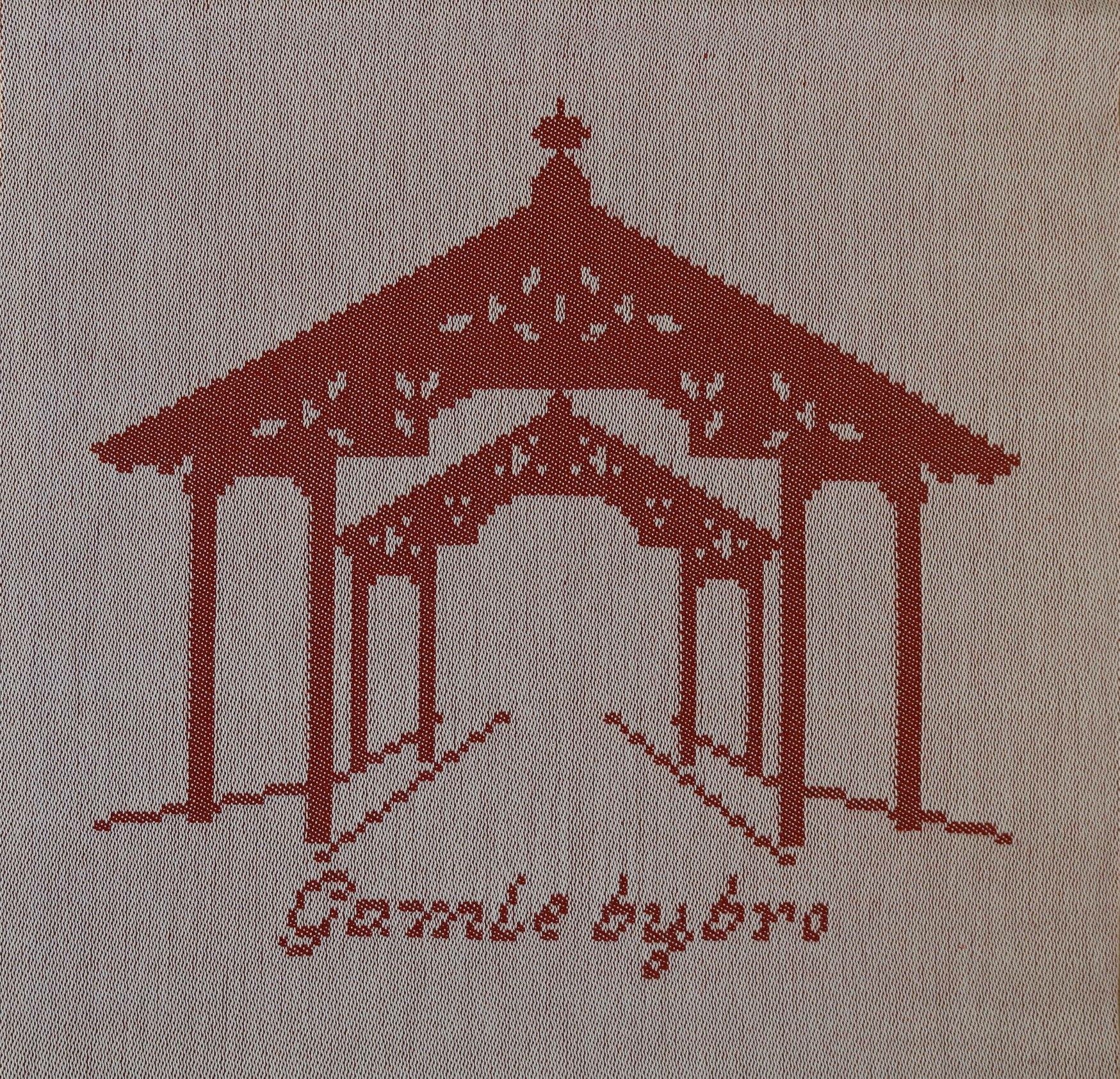
Serendipitously, we met up with the other women who would make up the rest of our group at the ferry in Sentralstasjon and we all took the ferry together. Just about an hour later we landed at Brekstad, another town much smaller than Trondheim, a ten minute drive from Bjorn. It was there that Anne and her husband met us with their cars and dropped us off at the Hotel Bjorn.
This hotel is small and quaint, has everything you need. Apparently a lot of skiers stay there. The plentiful and varied breakfast is included, the rates are reasonable. The town supermarket is right next door. And Anne’s shop is just a quick 7 minute walk away.
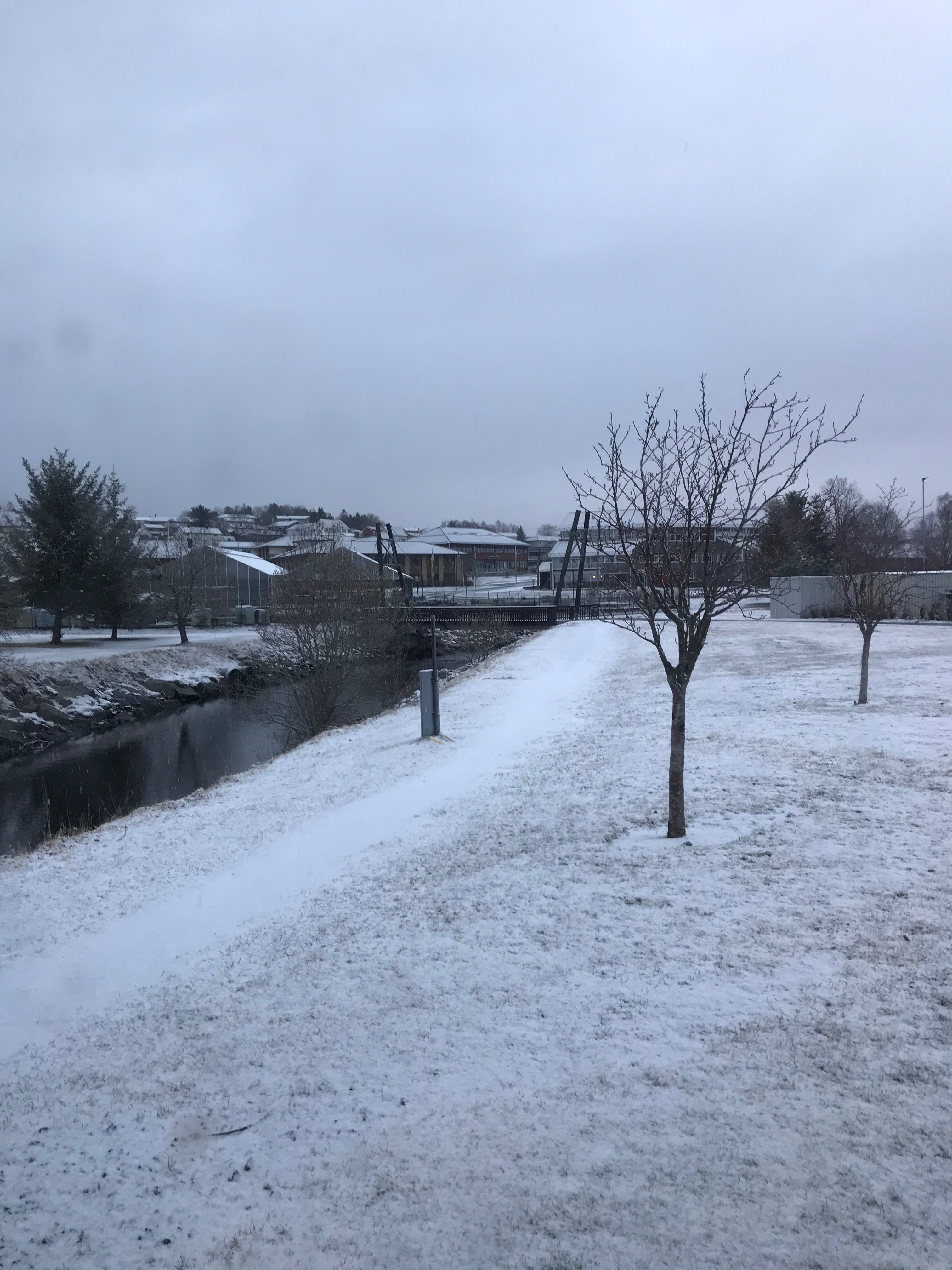
When I had left Phoenix, the temperature was 88 degrees. In Bjorn it was a brisk 42. And windy! Oh boy. Layers, and wool, kept me operational. One look at the scenery, however, just took my breath away. The air is so clean and clear, the sight of the mountains in the background, being on the water with nearby birds and trees just calm the spirit and the feed the soul. Of course, I quickly learned to appreciate the efficacy of heated floors, too. It was still light outside, so after checking into our rooms we made the three minute walk across the road to have dinner with Anne and her husband at the main restaurant in town, the Palermo. By the end of the week all the wait staff at the Palermo knew us well!
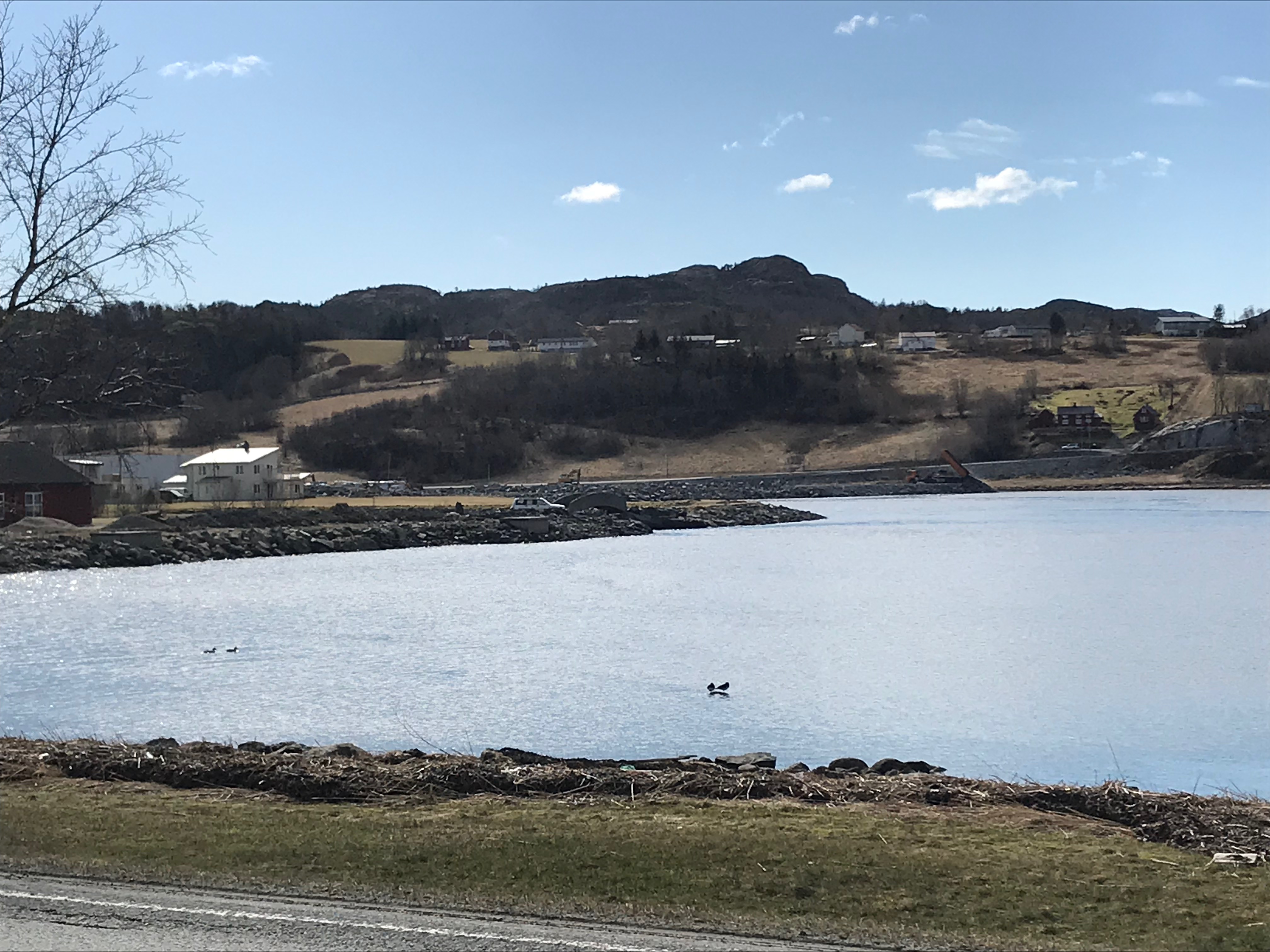
Our small group coordinated to walk over together the next morning. We were all so touched to see that Anne had hung our countries’ flags outside her shop in greeting.
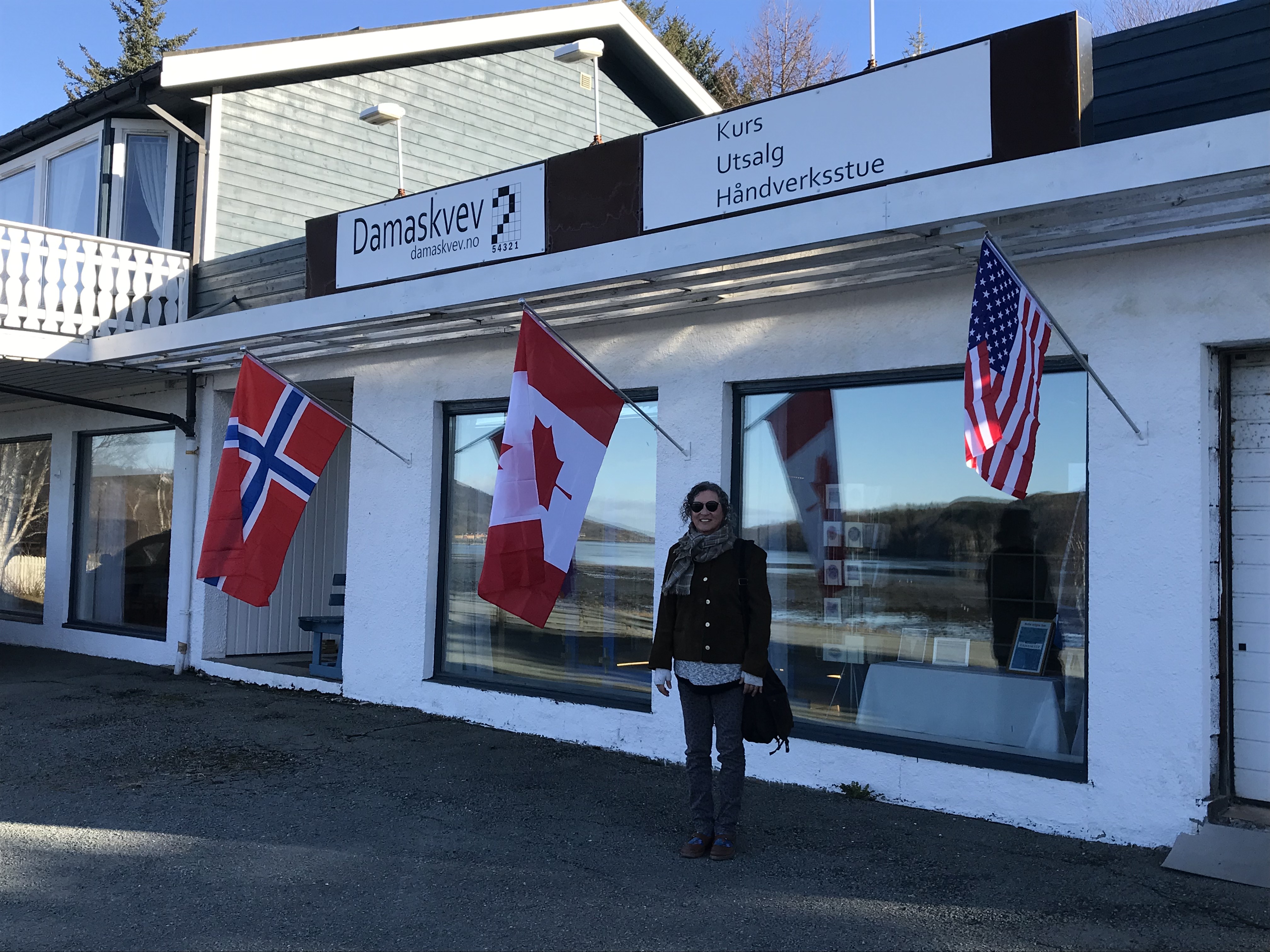
Our morning meeting table was located in the center of the classroom, which held seven class looms around the perimeter.
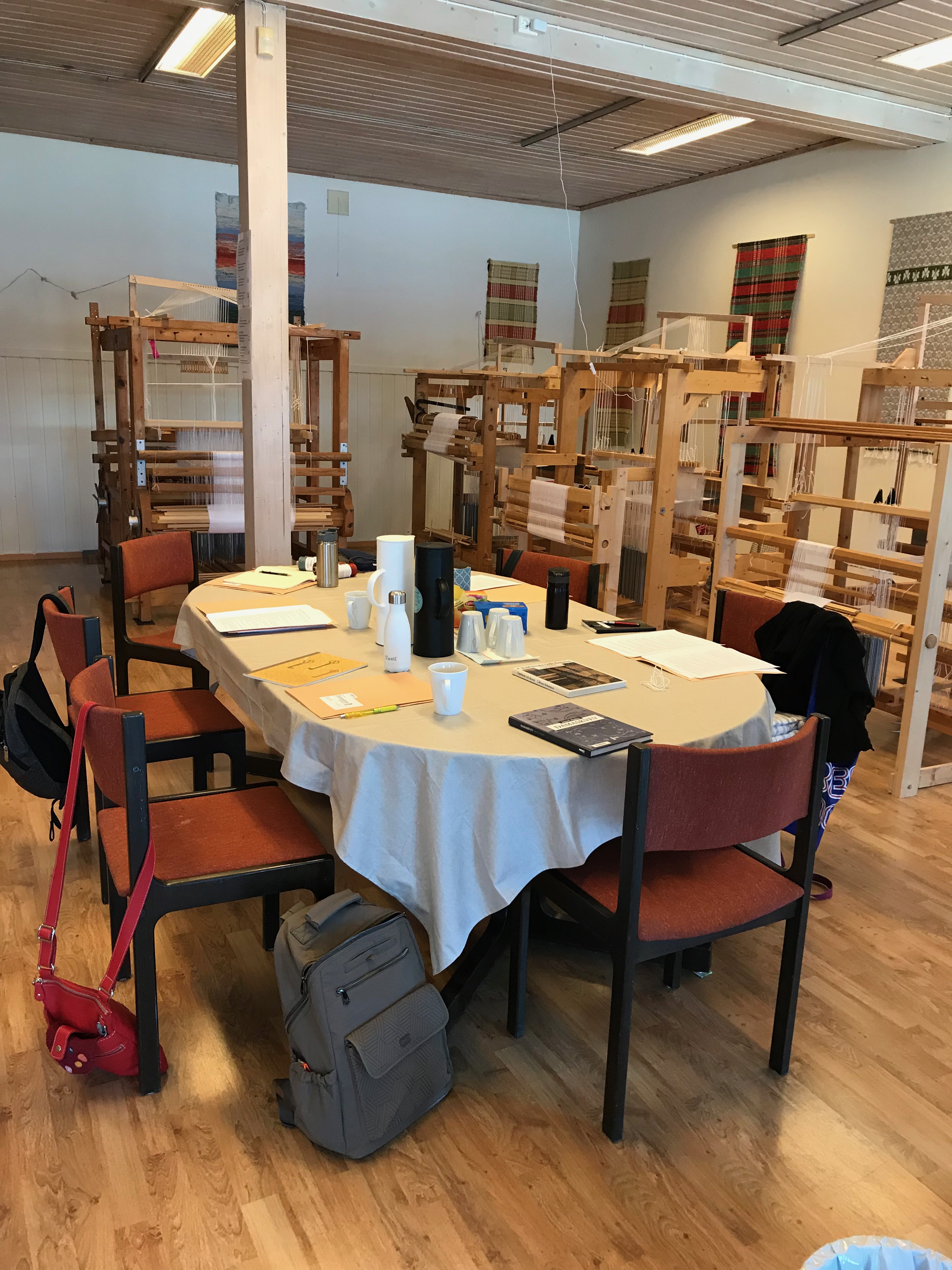
Five of the looms were handcrafted by local Norwegian woodworkers. Each of us had a full day to weave on one of the five looms, each configured slightly differently, and we rotated to a new loom each day. The sixth loom – Opphämta – was available as we had free time, and the combination loom was available after the draw pull and single pull set-up was completed as part of the class instruction. All the warps were white 16/2 cotton except the combination loom. This loom had a blue warp. The sett was roughly 40 epi. For the wefts we could choose any color we wanted of 16/2 linen. Anne has a well stocked supply in her shop, and quick access for restocking from her local supplier, Monica at Fosen Vevgarn AS. The loom setups were:
(1) 10 Pattern shafts, 5 point satin, 595 warps threads, 119 groups
(2) 10 Pattern shafts, 4 shaft cross twill, 620 warp threads, 155 groups
(3) 20 pattern shafts, 5 point satin, 625 warp threads, 125 groups
(4) 20 pattern shafts, 6 point satin, 750 warp threads, 125 groups
(5) 15 pattern shafts, 5 point satin, 615 warp threads, 123 groups
(6) 7 pattern shafts, Opphämta; 285 warp threads, 57 groups
(7) 20 pattern shafts, 5 point satin, 715 warp threads, 143 groups; 14 border threads on each side (This is the combination unit.)

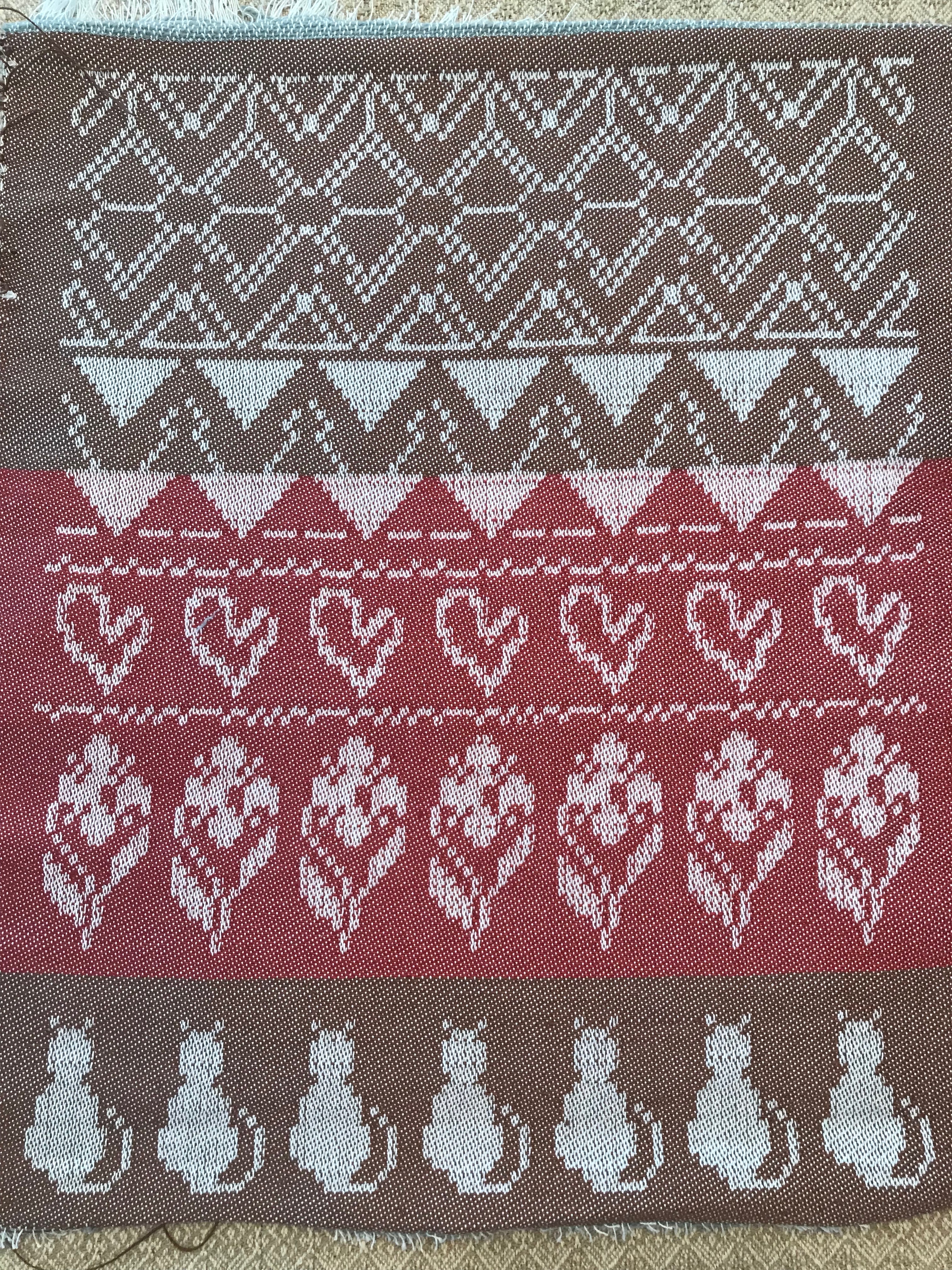
At first many of us dutifully started off with the patterns that Anne had compiled for each of the pattern shaft setups (10, 15, 20). By the time she covered the design portion of the class we quickly adapted new patterns and did a lot of experimenting. It was an interesting exercise to modify a pattern for different quantity pattern groups. There were many books in the shop that we could research for patterns and motifs, and we exchanged a few amongst ourselves as well. There was a lot of collaboration and cooperation among us! It really added to the synergy in the class.

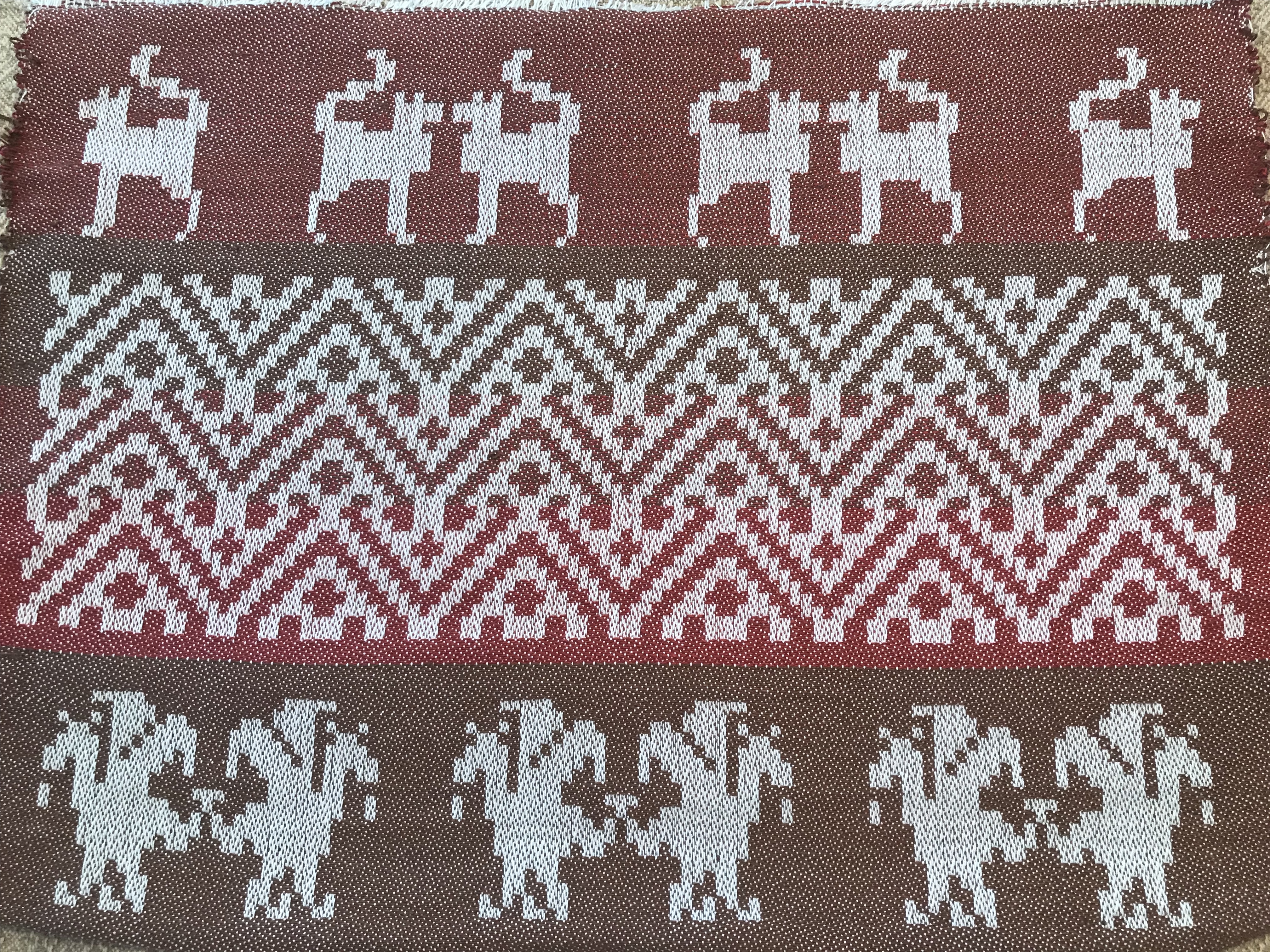
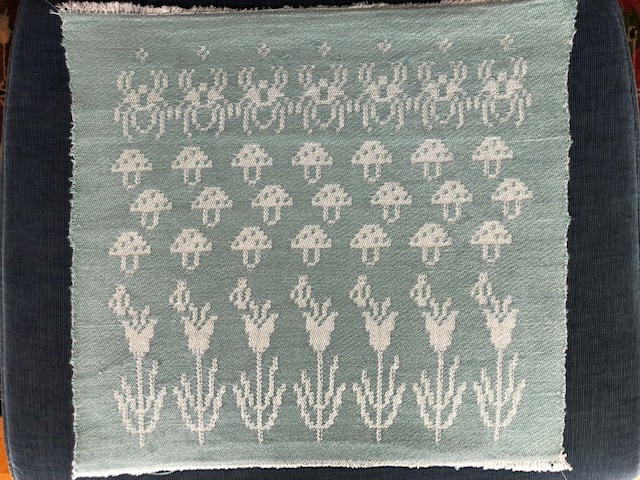
Each morning’s class started with lectures and demos from the topics in the folder handouts, as well as answering questions and issues as they arose.
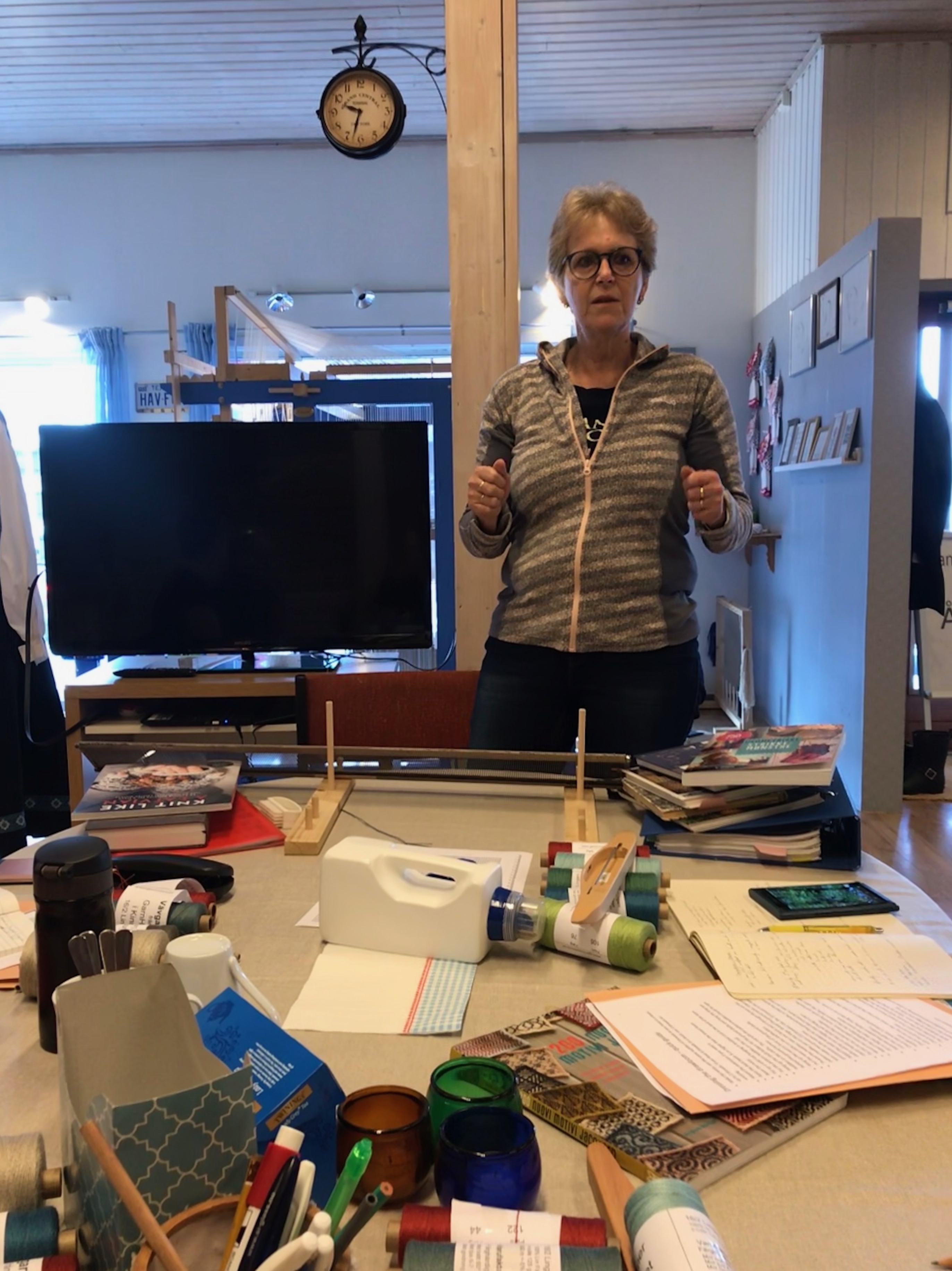
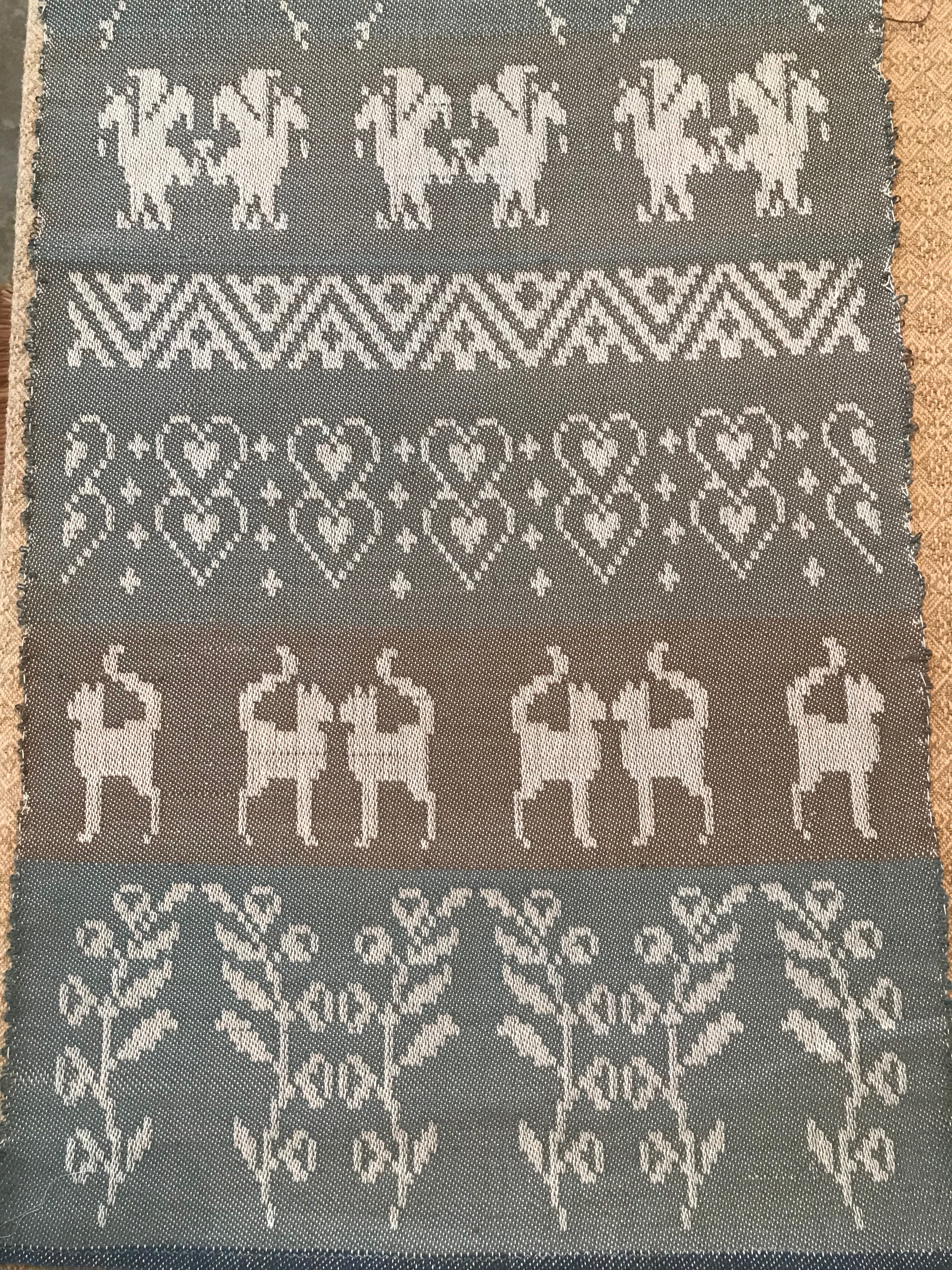
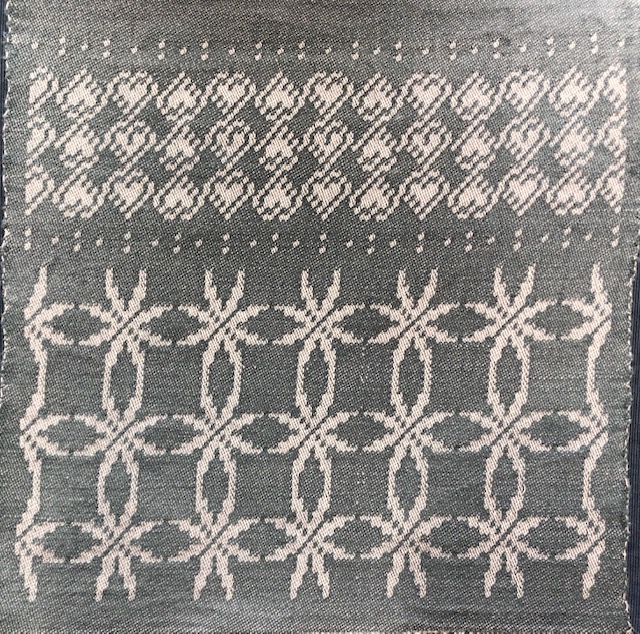
Lunch – a spread of classic Norwegian foods – was served in the break room, adjacent to the shop entrance, and we also broke for a 4 o’clock pick me up and general discussion of how things were progressing and what we would cover the next day. Coffee, tea and water were always available. And we were free to spend the evening weaving past class time, if we so desired. The basic class fee does not include materials – at the end of class the warp lengths are measured, all purchases are tallied up and accounts settled. I was surprised to find that I wove over three yards of fabric!
Once the class completed the task of the combination unit assembly, it was all hands on deck to maximize our designing time and organize our turns weaving on it. It worked out perfectly.
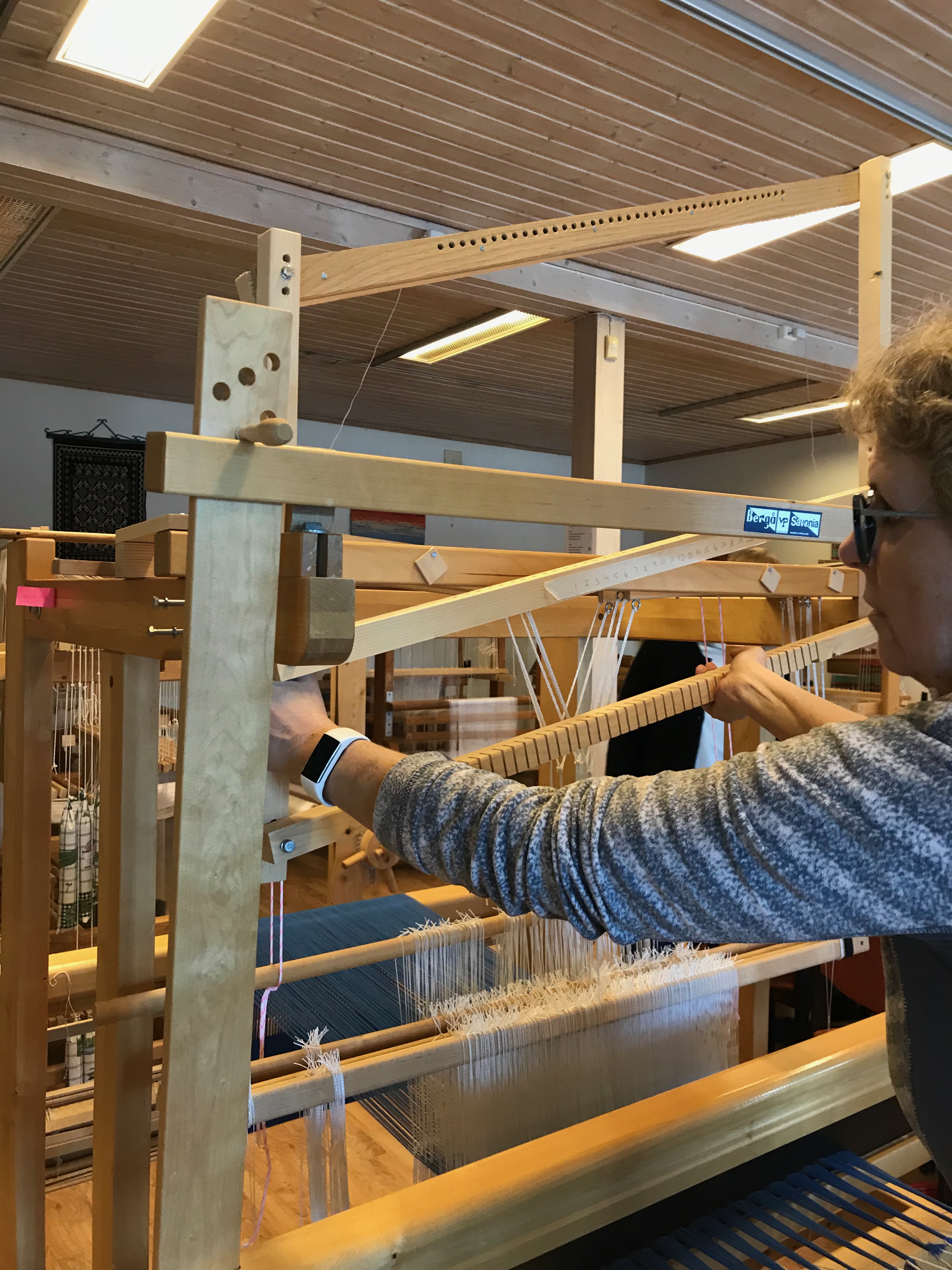
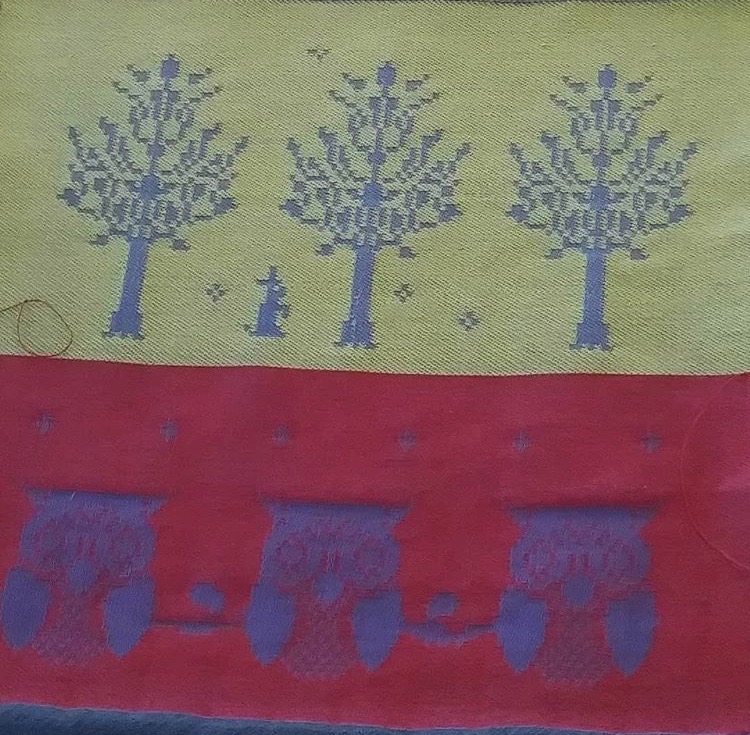
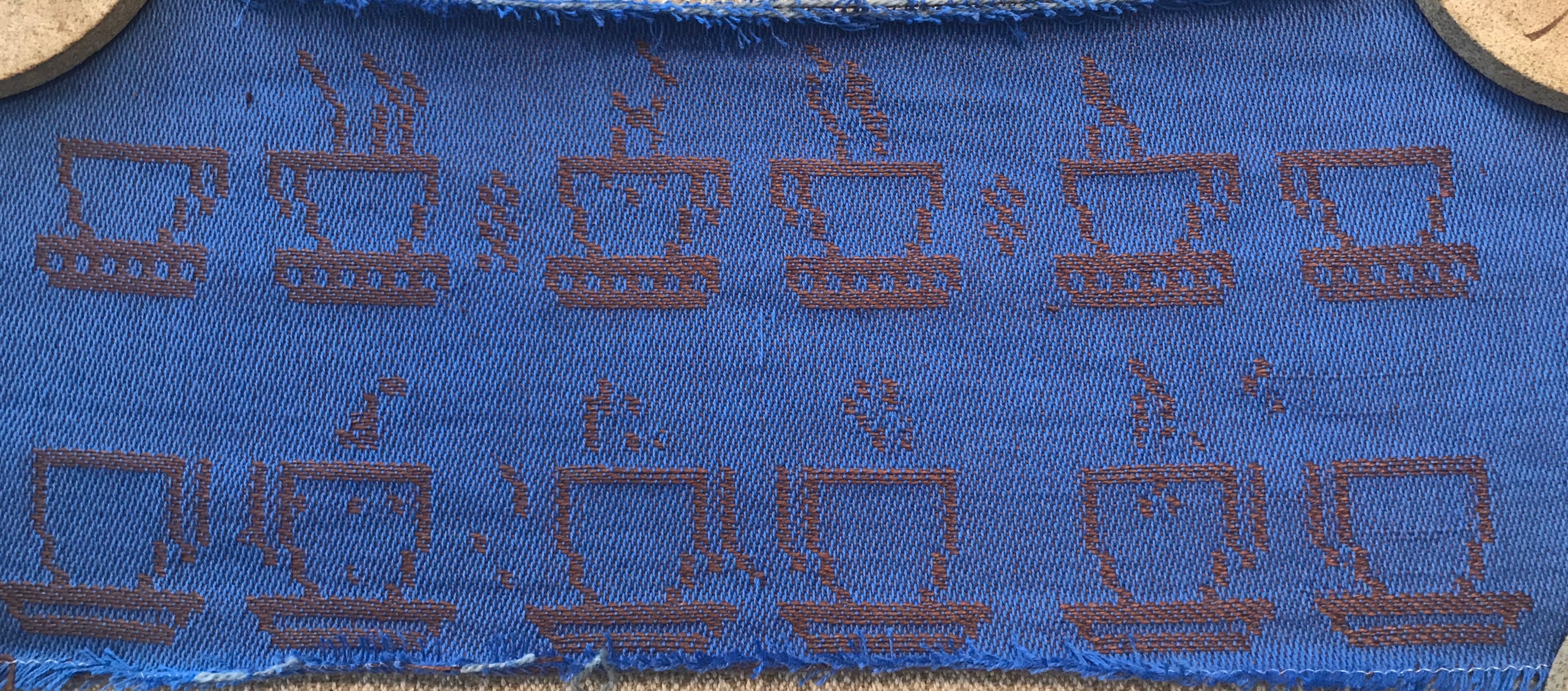
Looking back, I wish I had taken more time planning my design. I had prototyped a few of my teas cups on the draw cord looms and was feeling a bit overconfident – notice that in some of my samples my cups look like candles from my ten pattern 5 point satin sample. But there is a bit of an intricacy in the interaction of the draw cord and single pull. My tea cups progressed to look like diner coffee cups. That’s what sampling and learning are all about. It really pushed us all to another level: going through the steps of assembling the combination unit helped us to understand the interaction of the two components, and led to a new perception of design technique.
Thursday night – the fourth day of class – we were treated to a tour of the fjord, a special tour of Anne’s home studio, and a special traditional Norwegian dinner at Anne’s home.
Wild elk and reindeer stew, served with clove-infused loganberry compote, wild picked mushrooms and roasted vegetables was quite the veritable feast! Coffee, tea, carrot cake and ice cream cake topped off the dinner. Eventually we had to chase ourselves out, as the night was late and we had a full day ahead of us.
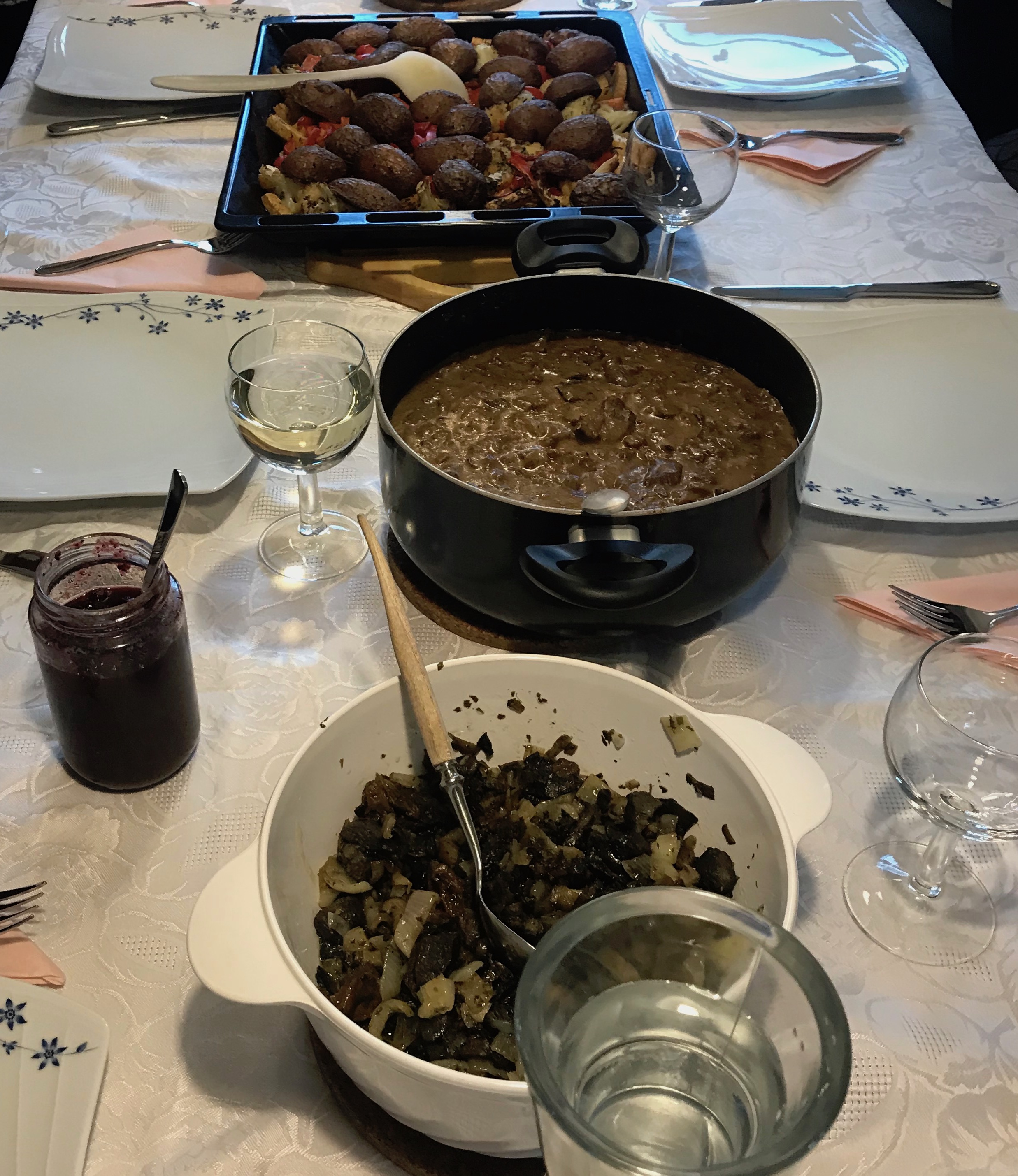
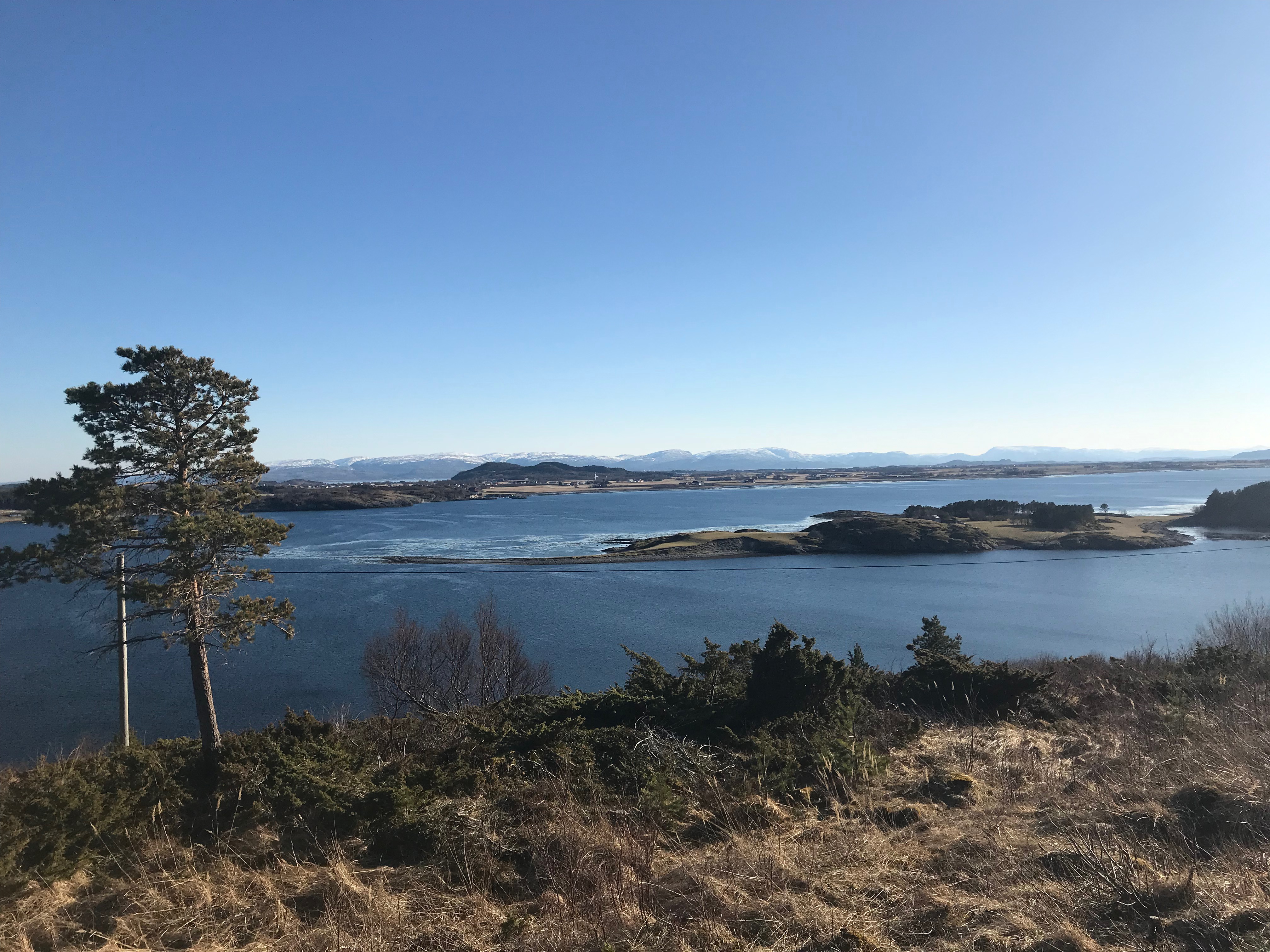
Anne’s home studio is an amazing utilization of space, tucked in the upper level of her home. We were able to see the loom the Anne adapted with a double draw cord system in combination with a single unit that she utilized to make a frame, motif and signature combination on the wall hanging that she created for her son’s wedding. There are eight looms in that small studio space, and I can’t even begin to describe all their capability as each has its unique configuration and purpose.
The week just flew by – and no wonder at all the material we covered! Each of us had a personalized handout. Our lesson plan covered (1) A quick guide for dressing the drawloom in the Norwegian tradition and methods of warp and pattern calculation; (2) Mounting the drawloom attachment and Separating the pattern shafts; and (4) Making/designing your own patterns. All this while weaving on different drawlooms and assisting in mounting the components of a combination unit. Poor Opphämta was more of a second thought for everyone, though some of us managed to squeeze it in.
It was an education in comparing the results of the same or similar motifs in the various satin structures. Clearly each person can champion the case for their favorite satin – and it does depend on what you want to weave and the ultimate use. No fast and set rules, just different preferences and practices. We discussed the benefits and pitfalls of how to treat selvedges and when sewing hems makes more sense. And also how expedient it can be to use only one pattern heddle per pattern unit – maybe more of a Norwegian approach? Anne also demonstrated the use of the ladder to tension a warp when space is a premium – utilizing the rungs of the ladder for tension can be effective and space saving, especially when you’re weaving alone.
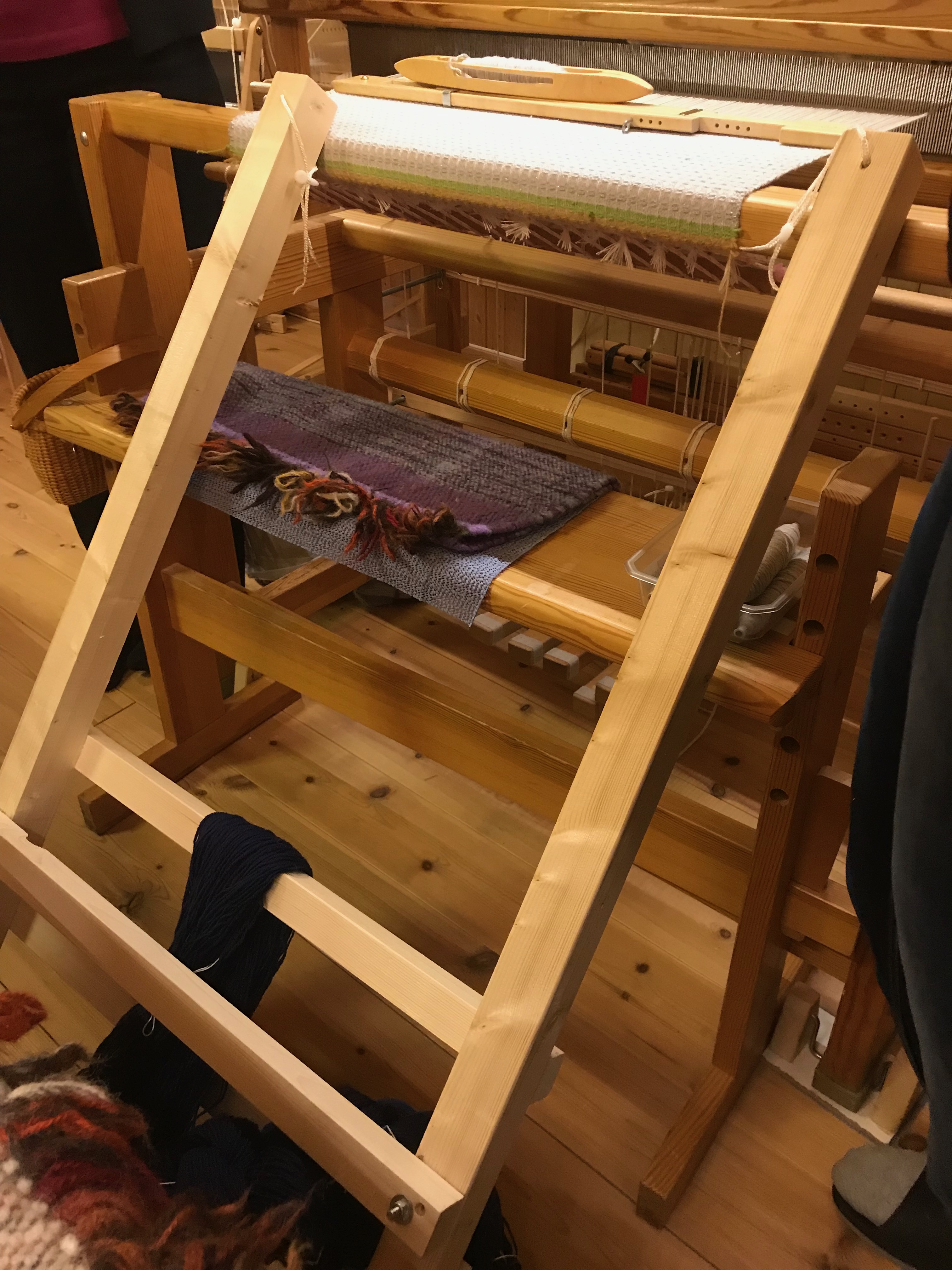

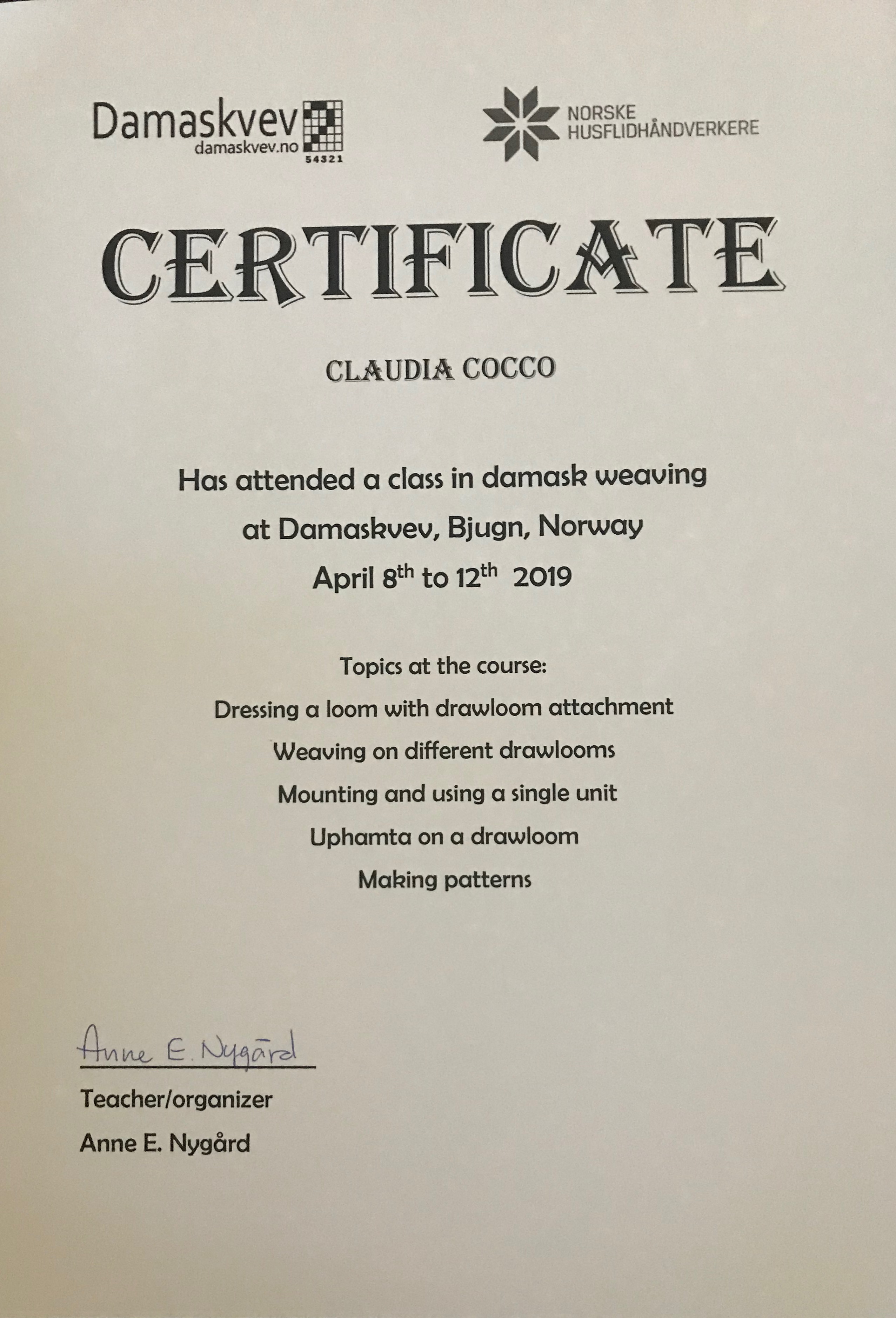
In so many cases, Anne has the unique perspective of evaluating different approaches and then using the most efficient method for the task at hand. She is a great proponent of making things more simple, not more complicated, and certainly not at the expense of beauty, craft or structure. This ultimately leads to a perspective of innovation and really does help break down the barriers of what is perceived as an intimidating craft.
All in all it was marvelous. The uniqueness of traveling to Norway, meeting an amazing group of women who are all passionate and artful in their craft. We had many discussions of weaving, and life, and craft, and the gratitude in having weaving in our lives and the opportunity to be on this adventure.
So now I am armed and dangerous. My very own course completion certificate is in hand! I have purchased a countermarche loom that I will be converting to a drawloom. I just have to get the loom from California to Phoenix. I feel like Wonder Woman now…..
All photos © Claudia Cocco, 2019, Anita Caldwell, 2019 and Laura Schickli, 2019


What an amazing experience! When you decide to focus and become a true weaver – nothing can stop you. Go For It!
What an adventure! Thanks for sharing.